|
|
|
|
HOME
|
US Navy -
ships
|
US Navy - air
units
|
USMC - air
units
|
International
Navies
|
Weapon Systems
|
Special Reports |
|
|
|
|
|
|
|
Royal Navy - Aircraft CarrierR 09 HMS Ark Royal |
|
|
|
|
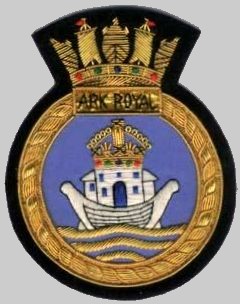 |
 |
|
|
|
|
Type, class: Aircraft Carrier; Audacious class Builder: Cammell Laird, Birkenhead, UK
STATUS: Awarded: 1942 Laid down: May 3, 1943 Launched: May 3, 1950 Commissioned: February 25, 1955 Decommissioned: February 14, 1979
Homeport: - Namesake: Ships Motto: desire does not rest Technical Data: see INFO > Audacious class Aircraft Carrier |
|
|
|
|
ship images |
|
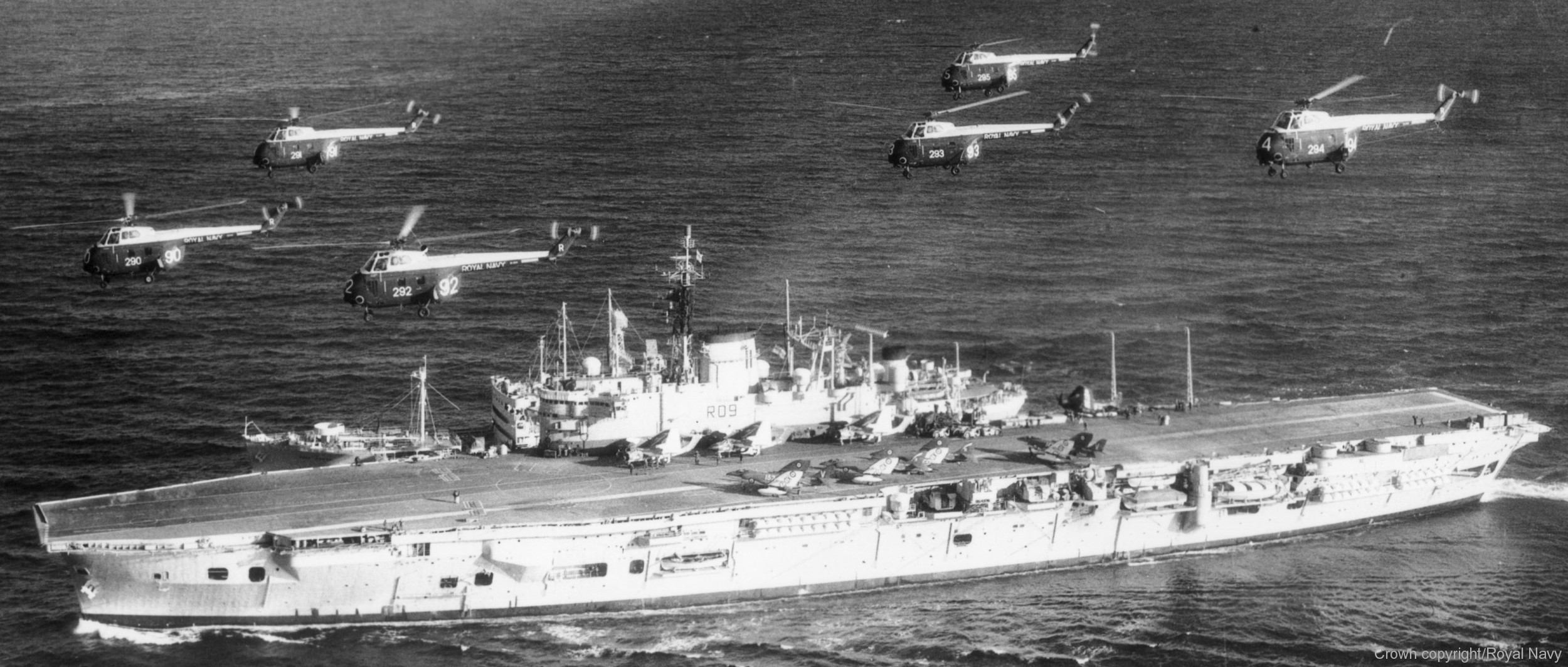 1960 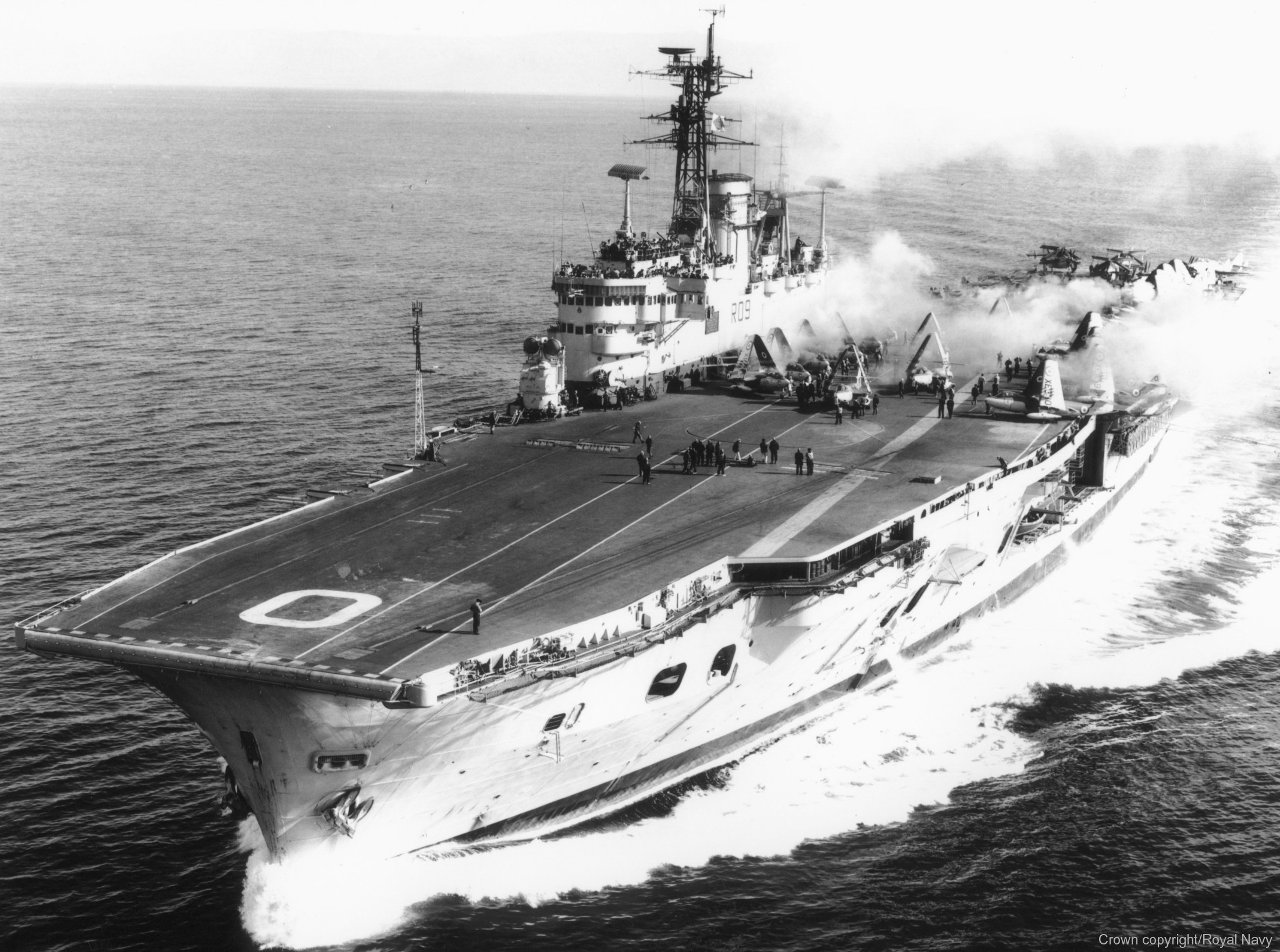  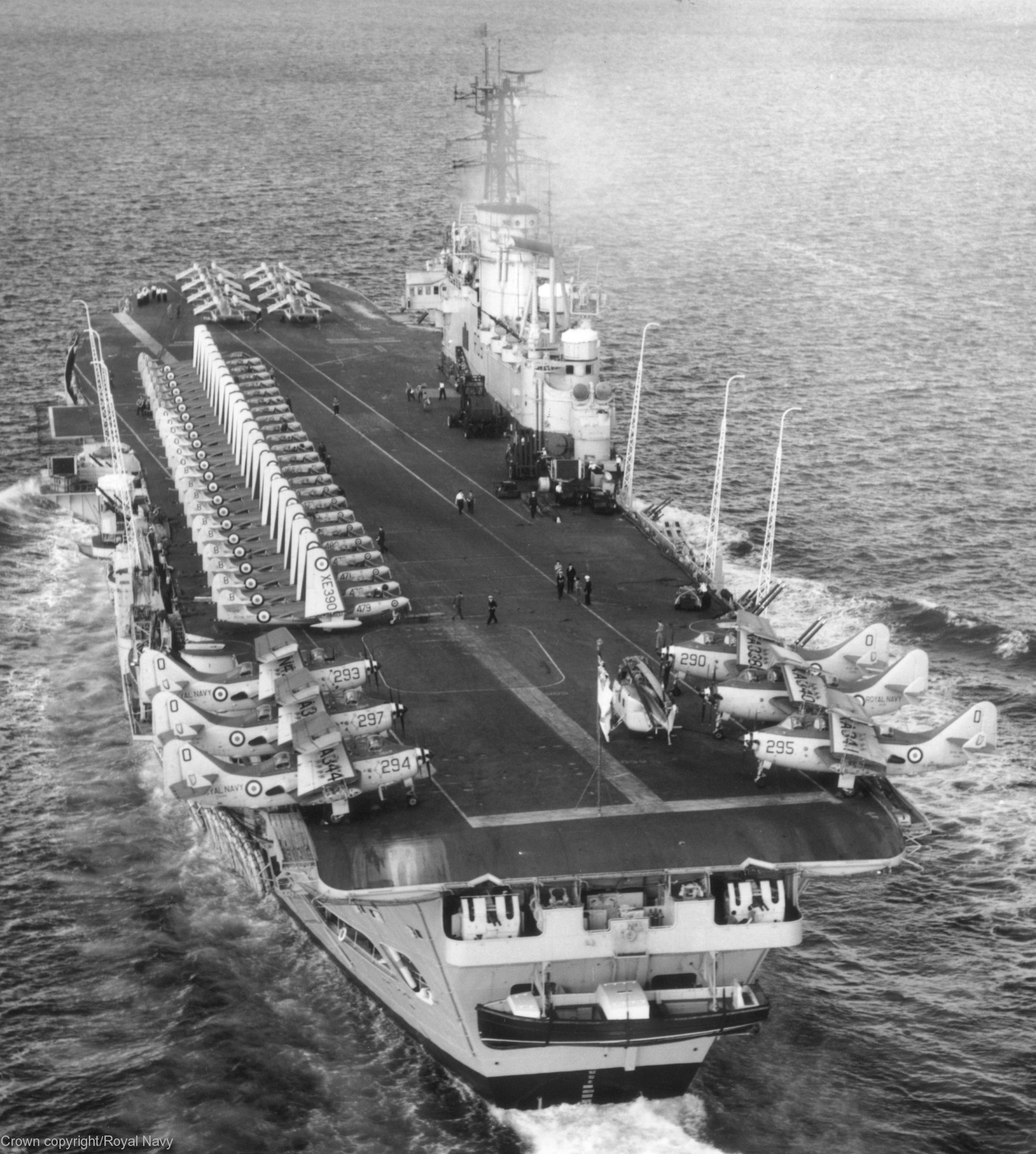 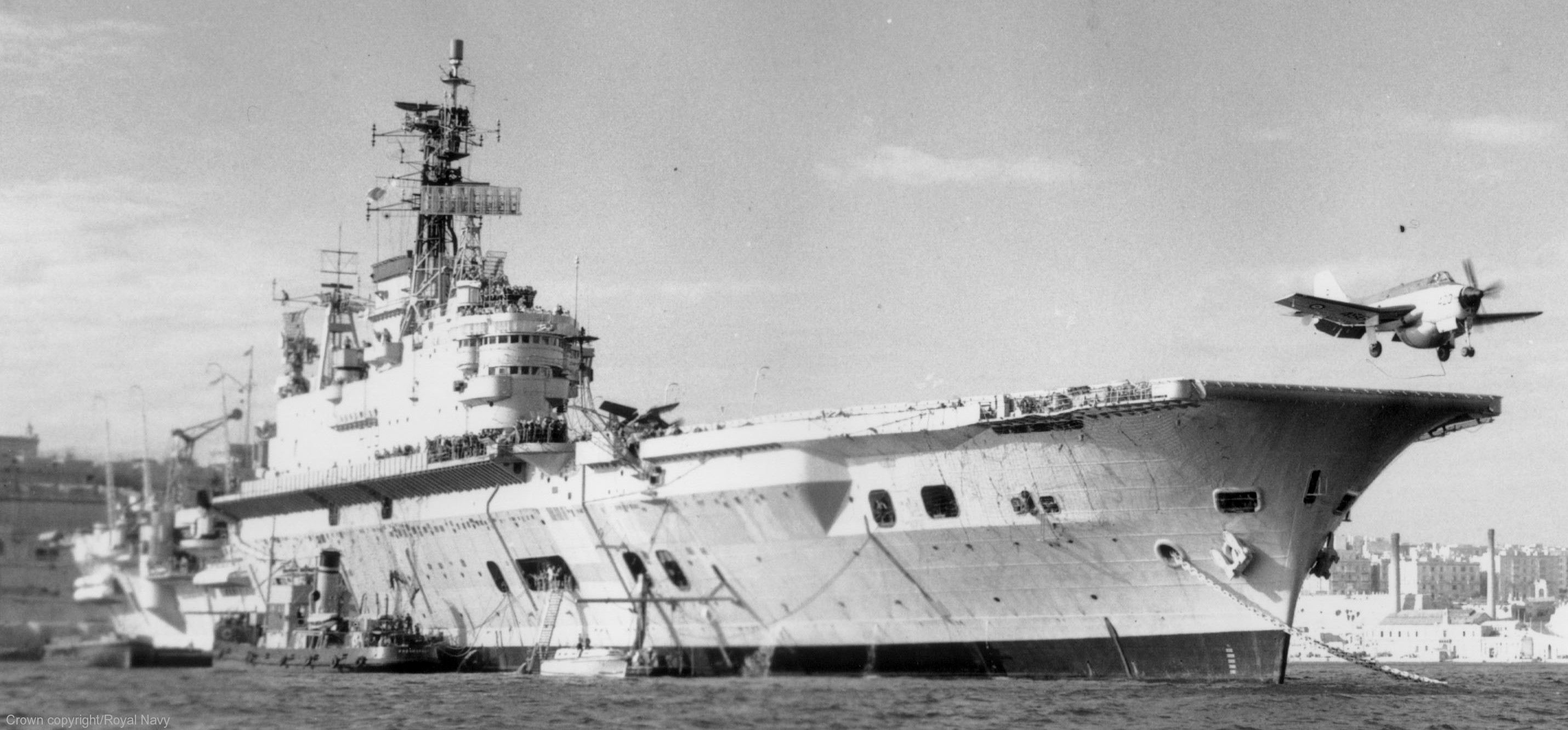 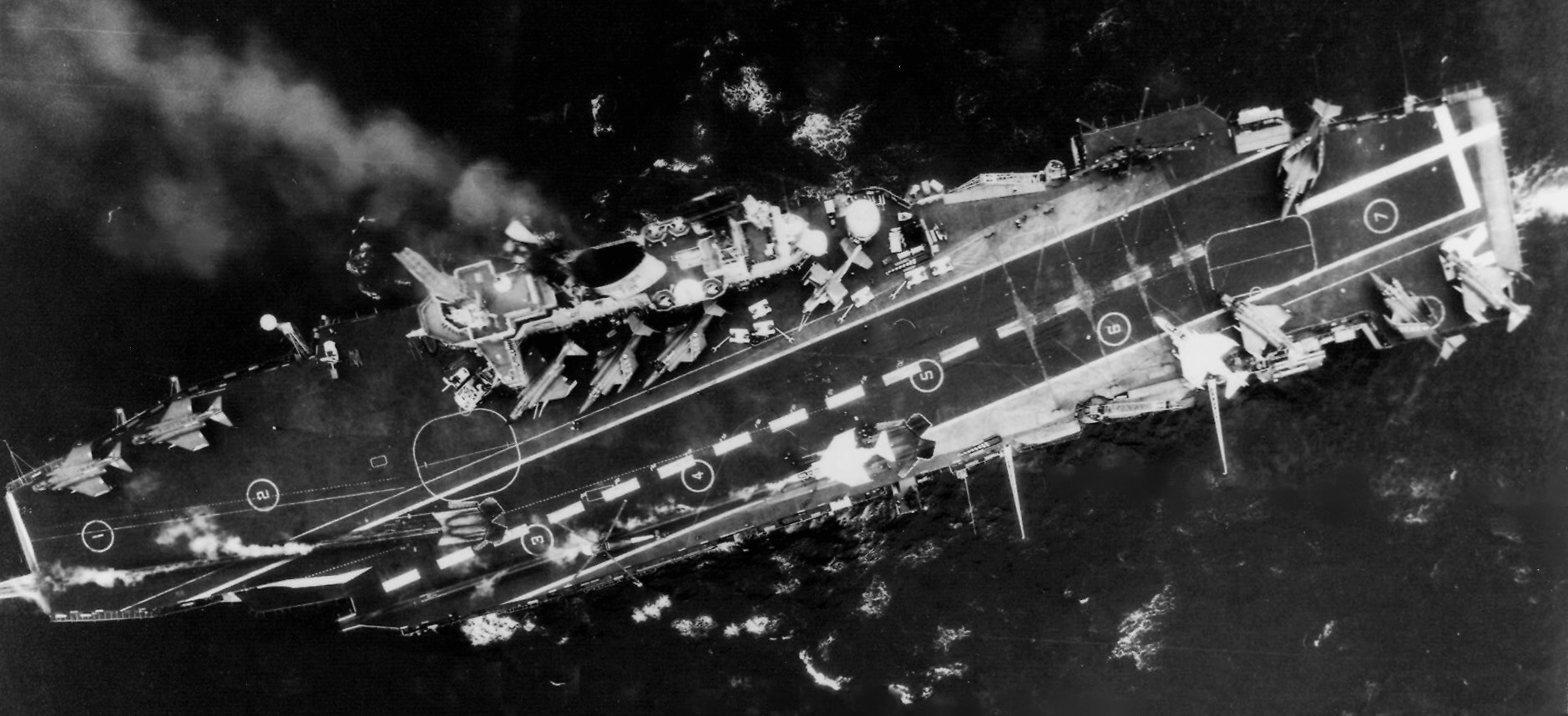 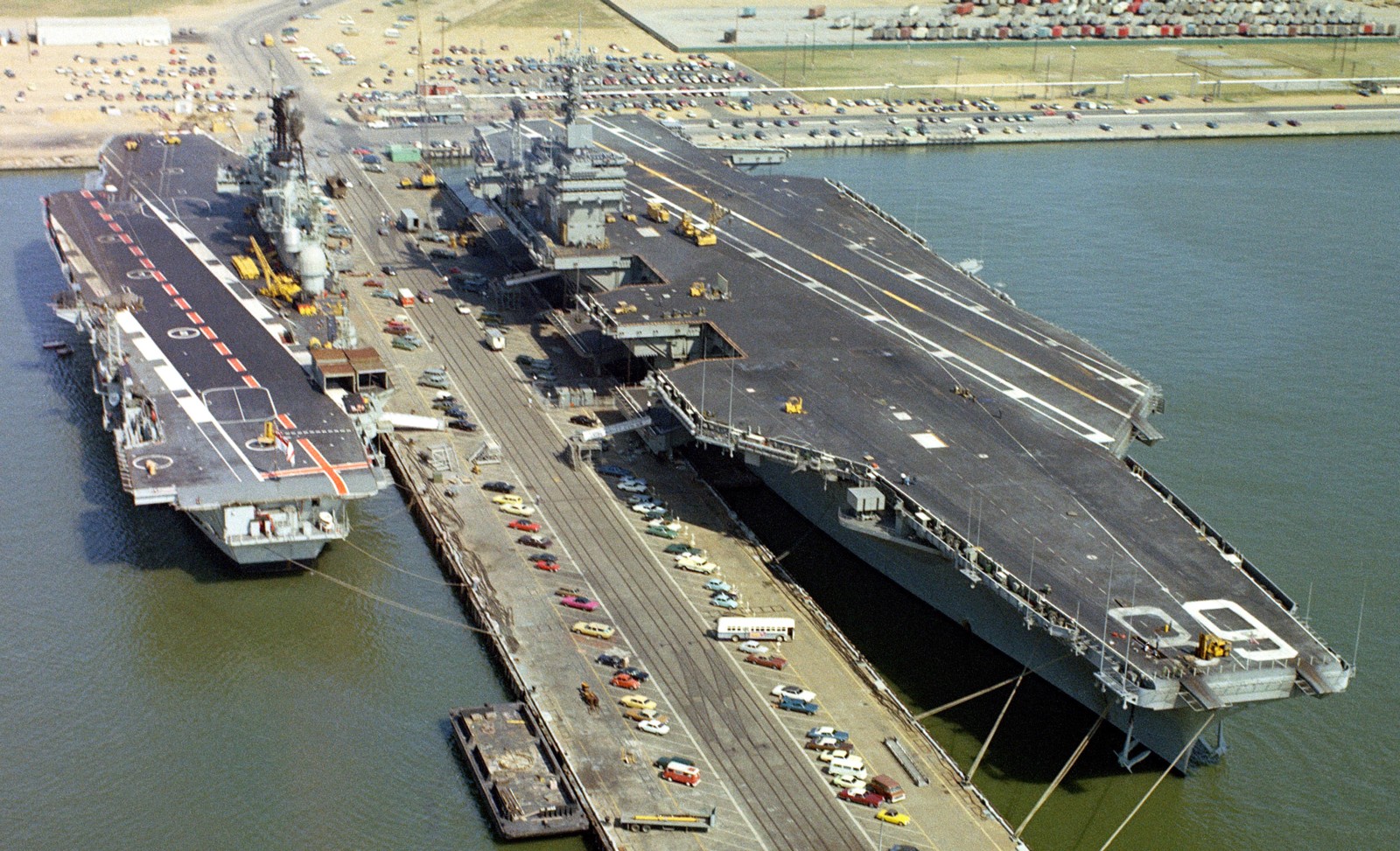 HMS Ark Royal (R 09) and USS Nimitz (CVN 68) at Norfolk Naval Station, Virginia 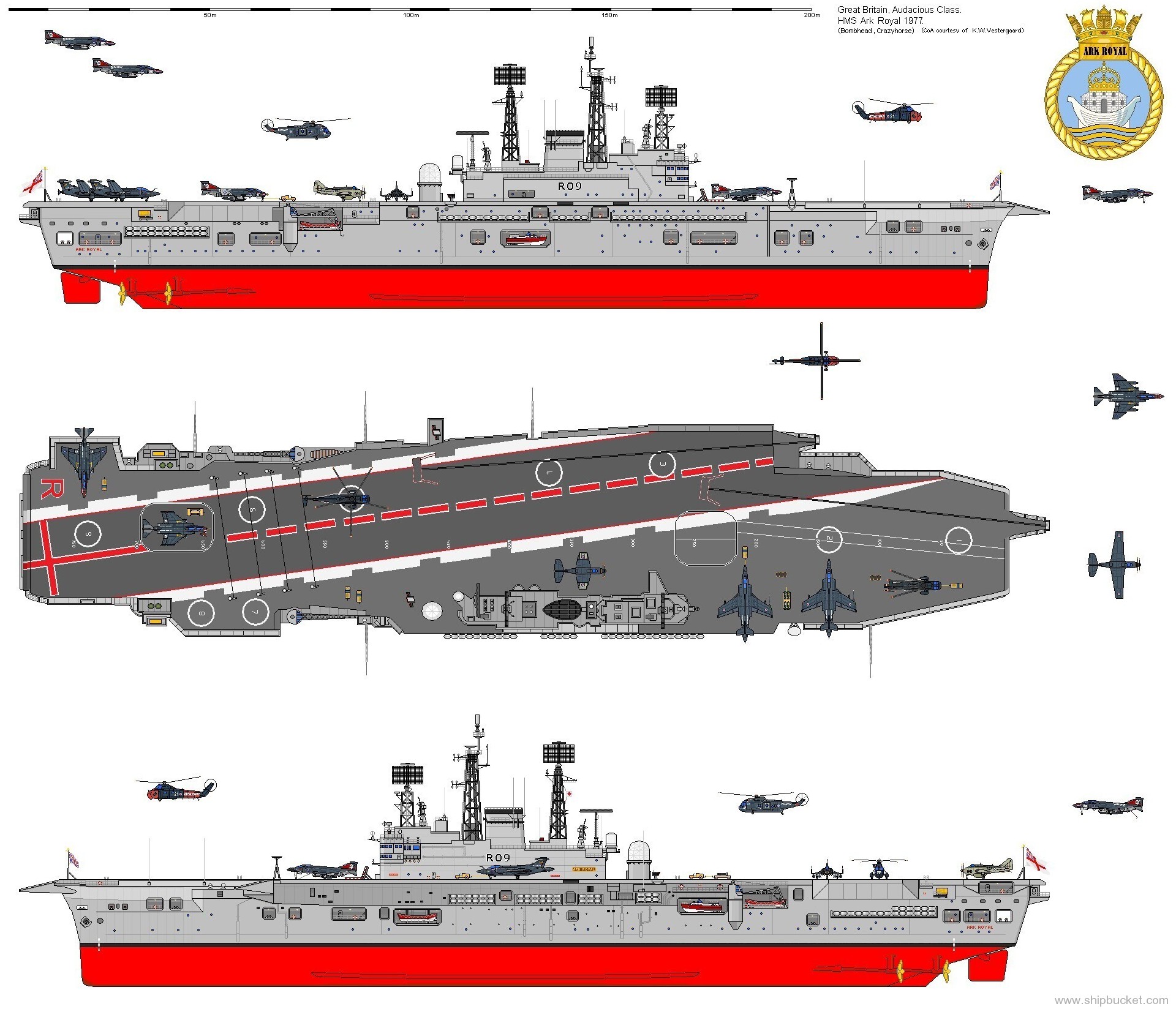 1977  1955 |
|
|
|
|
|
HMS Ark Royal (R 09): HMS Ark Royal was an Audacious-class aircraft carrier of the Royal Navy and, when she was decommissioned in 1979, was the Royal Navy's last remaining conventional catapult and arrested-landing aircraft carrier. Her sister ship, HMS Eagle, was the Royal Navy's first aircraft carrier to be equipped with an angled flight deck. Construction and modifications: Ark Royal was the sister ship to HMS Eagle, which was initially named HMS Audacious, hence the name of the class. Four Audacious-class ships were laid down, but two (HMS Africa and the original HMS Eagle) were cancelled when World War II ended, and construction of the other two was suspended for several years. Both surviving ships were extensively upgraded throughout their lifetimes. The ship was originally designated Irresistible, but was renamed Ark Royal prior to launch. The immediately previous Ark Royal, also an aircraft carrier, was torpedoed off Gibraltar on 14 November 1941 with the loss of one member of the ship's company. She was launched in 1950, and her completion took five more years. In this time, she underwent redesign and, when completed, she was markedly different from her sister ship. Shortly before her launch from the Cammell Laird shipyard, an image of the ship painted with her white undercoat was captured by the pictorialist photographer Edward Chambré Hardman. This has been exhibited many times under the name 'Where Great Ships Are Built' and later 'Birth of the Ark Royal'. When commissioned, she had a 5.5° partially angled flight deck, two steam catapults capable of launching aircraft weighing up to 30,000 pounds (14,000 kg), a deck-edge lift on the port side (the first British ship to be fitted with such a device), modified armament, and the new mirror landing system. Ark Royal was the first ship to be constructed with an angled flight deck and steam catapults, as opposed to having them added after launching. These innovations allowed aircraft to land and take off from the carrier at the same time. Her flight deck as built was 800 by 112 feet (244 by 34 m). About a year after commissioning, her forward port 4.5 inch (113 mm) guns were removed to improve aircraft operations over the angled deck. Four years later, the port deck-edge lift and the forward starboard 4.5 inch (113 mm) guns were also removed. After the 1964 refit only one twin 4.5-inch gun mount remained aft on port and starboard side. From 1967 to February 1970, she underwent a refit which was a major rebuild to her structure, but only an austere update to her electronic equipment, and was confined to changes needed to operate the RN's version of the Phantom. The refit cost around £30 million; far less than the modernisation of Eagle but also added several improvements, which allowed her to comfortably operate the larger Phantom and Buccaneer Mk.2 aircraft. Like Eagle her modifications included a full 8.5° angled flight deck, new and far more powerful steam catapults, bridle-catchers, heavy grade jet-blast deflectors (both of which Eagle did not receive), and heavy-weight arrestor cables.Twelve hundred miles of new cabling was installed, but the ship was not completely rewired and retained old DC electrics. A modified island (with a different arrangement from Eagle) and a partially new electronic suite were also added, though some of her original radars, such as 983 heightfinders were retained and she did not receive the 3-D air-search radar set that her sister had fitted, instead two double array 966 versions of the standard RN 965 long range system were fitted and one of the new 986 sets. Significantly, Ark Royal was the first and only RN carrier fitted with USN carrier approach, AN-SPN 35 radar, increasing night aircraft operational capability and safety. Her flight deck size was increased port aft however, giving her extra deck-park space for her airgroup that Eagle did not have. She was also fitted for four Sea Cat missile launchers, but they were never installed, so she emerged from this refit with no defensive armament. Significantly, there was little more than an overhaul of her steam turbines and boilers; meaning that mechanically she was very dated, however the stripping out of Eagle meant that for a time essential spares were available. Ark Royal was then scheduled for at the most only five years more service by a new government policy to scrap the carriers by 1975. Intensive maintenance as well as a new programme of continuous servicing and repair (with RN maintenance ships always in her task groups), was able kept her going until late 1978, though increasing mechanical and electrical failures lead to her decommissioning in early 1979. Initially on entry into service, the ship had a complement of up to 50 aircraft comprising Sea Hawks, Sea Venoms, Gannets, Skyraiders and various helicopters. As later aircraft types grew in size and complexity, her air group fell to below 40 when she left service in 1978. Operational history: Ark Royal participated in many exercises as part of the British fleet and NATO squadrons, but saw no combat duty. She was not involved in the Suez Crisis of 1956, about a year after her commissioning, because she was on her way there when she ran a main propellor shaft bearing and had to return to Devonport for a major refit. Eagle replaced her at Suez. In 1963, she carried out trials for a new type of Vertical/Short Take Off and Landing (V/STOL) aircraft, the Hawker P.1127, which later developed into the Hawker Siddeley Harrier. The same aircraft, now having been redesigned and developed as the British Aerospace Sea Harrier, was later accepted as the primary strike capability of the last Ark Royal from 1980 onwards. She was part of the Beira Patrol enforcing the naval blockade of Rhodesia in 1965. The 1966 Defence White Paper planned the end of British carriers in the early 1970s but she went into dock for her refit to head off dockyard redundancies and the likely political issues. A new government re-examined the case for carriers finding that shore-based aircraft could not provide adequate cover for British concerns "East of Suez". On 9 November 1970 while in the Mediterranean to participate in a NATO exercise she collided with Bravyy, a Soviet Kotlin-class destroyer which was shadowing Ark Royal (a common practice during the Cold War). Ark Royal was slightly damaged, while the Soviet destroyer sustained minor damage and two missing crew. Ark Royal's commanding officer, Captain Ray Lygo, was cleared of blame at the subsequent court-martial. The ship featured in the 1960s British television series Not Only... But Also starring Peter Cook and Dudley Moore. In one episode, they used the ship's catapult to shoot a piano into the sea. When commissions ended, items were fired off the catapult, including pianos and once a toilet complete with paying-off pennant. By 1970, Ark Royal had a complement of 39 aircraft. This typically comprised 12 Phantom FG MK.1s, of 892 Naval Air Squadron, 14 Buccaneer S MK.2s of 809 Squadron, 4 Gannet AEW Mk.3s of B Flight 849 Squadron, 6 Sea King HAS Mk.1s of 824 Squadron, 2 Wessex HAR Mk.1s of the Ship's Flight and 1 Gannet COD Mk.4. later replaced by an AEW3. The Buccaneers doubled as tanker aircraft, using buddy refuelling pods, and as long-range reconnaissance aircraft with bomb bay-mounted camera packs. In July 1976, she represented Britain at the United States Bicentennial Celebration in Fort Lauderdale, Florida. In 1972, the Buccaneers aboard Ark Royal took part in a long range strike mission over British Honduras shortly before its independence to deter a possible Guatemalan invasion. In 1977, under the flag of Admiral Sir Henry Leach KCB Commander-in-Chief Fleet, Ark Royal led the Royal Navy's tribute to and celebrations of Queen Elizabeth II's Silver Jubilee at Spithead. In the mid-1970s, the ship made a return to television. A major BBC documentary series, Sailor was made, showing life on board the ship during a February to July 1976 Western Atlantic deployment. Her commanding officer at this time was Captain Wilfred Graham, a later Flag Officer Portsmouth and the ship's Commander (executive officer) was Commander David Cowling. The theme tune for the programme was "Sailing" by Rod Stewart - a song that came to be associated with the ship and her successor. She visited Fort Lauderdale, Florida from 30 May until 14 June 1978. She entered HMNB Devonport on 4 December 1978 and decommissioned on 14 February 1979. Like her sister Eagle, she had a relatively short (24-year) life, and when the White Ensign lowered for the last time the Royal Navy no longer had fixed wing aircraft at sea. On 29 March 1980, the Ministry of Defence (MOD) announced that she would be sold for scrap and so ended plans to preserve her. She left Devonport on 22 September 1980 under tow to be scrapped at Cairnryan near Stranraer in Scotland, arriving on the 28 September. Breaking up took until 1983. Various parts of the ship remain as souvenirs or memorials; for instance, an anchor outside the Fleet Air Arm Museum at RNAS Yeovilton. Final air wing 1970-1978: 809 NAS – 14 Buccaneer S2 Strike 892 NAS – 12 Phantom FG1 Fleet Air Defence B Flight 849 NAS – 4 Gannet AEW3 Airborne Early Warning 849 NAS. – 1 Gannet COD4 Carrier Onboard Delivery 824 NAS – 7 Sea King HAS2 Helicopter Anti-submarine warfare Ships Flight – 2 Wessex HAS1 Search and Rescue Aircraft: Hawker Sea Hawk de Havilland Sea Venom Fairey Gannet Westland Wyvern Grumman Avenger McDonnell Douglas Phantom FG.1 Blackburn Buccaneer Supermarine Scimitar de Havilland Sea Vixen Westland Dragonfly Westland Sea King Westland Wessex source: wikipedia (2016) |
|
|
|
|
|
|
|
|
patches |
|
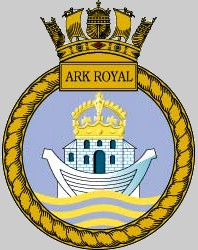
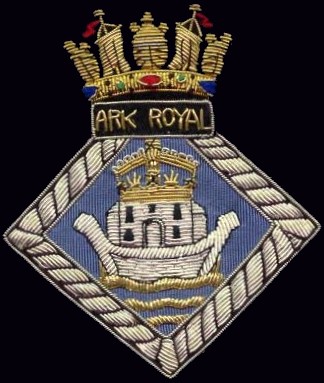 |
|
|
|
|
